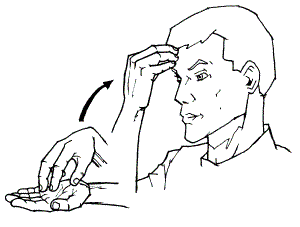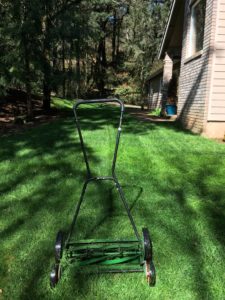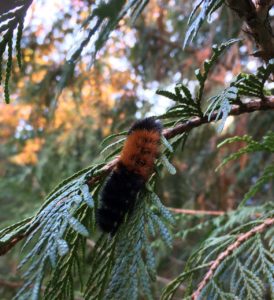June 10th, 2020 at 7:06 pm (History, Society)
I took some time to investigate the history of blacks in Oregon, and what I found was eye-opening. In 1844, the then-territory of Oregon passed a law banning slavery. To modern eyes this may seem quite progressive, until you read the rest of the law and it becomes clear that this was not a statement about the ills and injustice of slavery, but rather an effort to rid the state of black people. In addition to banning slavery, the law also prohibited blacks from entering the state. Those who entered anyway could be whipped “upon his or her bare back not less than twenty nor more than thirty-nine stripes”, every six months until they left. The law was repealed the next year, but other “exclusion bills” followed.
In 1857, Oregon joined the United States and became the only state to do so with a clause in its state constitution to specifically exclude blacks. The Oregon Constitution banned slavery and prevented blacks from legally residing in the state, or owning property, voting, etc. Oregon also rescinded (took back) its ratification of the 14th amendment (which gave all native-born Americans citizenship, including blacks) in 1869 and voted against the 15h amendment (to give blacks voting rights) in 1869. It did not ratify the 15th amendment until 1959 (!) and the 14th in 1973 (!!).
Oregon continues to have a small black population – about 2%. That rarity can create its own problems. I found this very thought-provoking:
“Because exclusion policies served to keep minority numbers low, racial discrimination has not been evident to white Oregonians and many outsiders… Perhaps that is why Oregonians have a special problem with race-blindness: it tends to afflict most those who are unaccustomed to seeing themselves in racial terms.” from Race, Politics, and Denial: Why Oregon Forgot to Ratify the Fourteenth Amendment by Cheryl A. Brooks (2005)
And maybe this contributes to not only ignorance, but also violence. Given the recent murder of George Floyd, it was chilling to come across this passage:
“One such case occurred in 1985, when Lloyd Stevenson, a black man, was killed by a policeman using a choke hold. Neither of the two officers involved was disciplined. The case took a bizarre and controversial turn when on the day of Stevenson’s funeral, two police officers sold t-shirts to fellow officers bearing the slogan “Don’t Choke ‘Em, Smoke ‘Em.” They were fired but were eventually reinstated with back pay.” from Blacks in Oregon by Darrell Milner (2019)
There is so much more to learn and so much more to do. And of course it is not just about Oregon. I am grieving for this history and for our present day. Unlike a virus that jumped species and attacked us from the outside, racism is something that we created. We did it to ourselves. That makes us responsible. And that also means it is an opportunity, because we control our actions and how we want the future to be. We get to choose.
2 Comments
2 of 2 people learned something from this entry.
May 24th, 2020 at 11:05 pm (Language)
 … and facial expressions! A talented friend of mine started offering online lessons in American Sign Language (ASL), and so far we’ve covered basic signs (e.g., please, thank you, how do you sign…?), the manual alphabet, and how to express basic needs (e.g., hunger, thirst, sleepiness). I have dim memories of learning some ASL in high school, and it seems that the alphabet, at least, stuck with me. It’s great to learn a bunch of new vocabulary. (The image at right shows the sign for “learn”.)
… and facial expressions! A talented friend of mine started offering online lessons in American Sign Language (ASL), and so far we’ve covered basic signs (e.g., please, thank you, how do you sign…?), the manual alphabet, and how to express basic needs (e.g., hunger, thirst, sleepiness). I have dim memories of learning some ASL in high school, and it seems that the alphabet, at least, stuck with me. It’s great to learn a bunch of new vocabulary. (The image at right shows the sign for “learn”.)
I don’t know if or when I’ll get to put ASL into practice, but regardless I’m enjoying puzzling through a new kind of grammar and the… hm… performance aspect of signing. It’s not just about moving your hands; the aspects of eye contact and facial expression are also necessary, and even though it’s mostly intuitive so far, it’s new/foreign to have to think consciously about what expression goes with the sign :) I get the sense that the expressions are much more vivid and large than they are when I’m speaking English. (I’m sure it becomes natural over time.)
Some other ideas I found valuable that we’ve covered so far:
- Sign language has its own grammar, and notably it is not a literal reproduction of English with hand signs (I’ve encountered this concept before and it continues to fascinate me. It makes sense to me that what would be natural and efficient in spoken language might be quite different in signed language).
- Signs have three parts: hand shape, hand position, and motion.
- We are encouraged to fingerspell words as units, so instead of thinking/spelling “b” “o” “o” “k”, you do better to think sign-b-sign-o-sign-o-sign-k as a unit. This sounds similar to what you’d like to achieve with any foreign language: blending units into chunks to make communication more natural.
I’m looking forward to next week’s lessons!
Comments
April 25th, 2020 at 10:28 pm (Engineering)
 I have a lawn mower (reel mower) that is purely mechanical: you push it and as it moves it spins five curved blades that chop up the grass. It has no engine and uses no gas or electricity. Mowing the lawn with it is a nice exercise: you push it along and it makes a quiet snick-snick-snick sound as it cuts the grass. I’m very fond of it!
I have a lawn mower (reel mower) that is purely mechanical: you push it and as it moves it spins five curved blades that chop up the grass. It has no engine and uses no gas or electricity. Mowing the lawn with it is a nice exercise: you push it along and it makes a quiet snick-snick-snick sound as it cuts the grass. I’m very fond of it!
Yet over the years the blades grow dull. I figured I’d need to take it to a sharpening service, but then I found this Instructable that shows you how to sharpen a reel mower yourself. It’s quite clever *and* easy to do! You use the mower to “lap” its own curved blades, meaning to sharpen and align them by running them backwards against the fixed blade (“bed knife”). As advertised, this was straightforward: I swapped the gears on the two wheels, adjusted the bed knife (this was actually the trickiest part for me), smeared on “grinding compound” (I ordered this Permatex compound for just $4!), and then pushed the mower around for a while with its blades grinding each other smooth/sharp. In this process I also got to study just how the mower works (I love decoding machines) and to admire the built-in ingenuity and simplicity of it.

At least, that’s what it was supposed to do. After I’d pushed it for a while, I felt the blades with my finger. They had turned shiny (see picture at right), but didn’t feel sharp. I decided to give it a try. I swapped the gears back, readjusted the bed knife, and took my mower out to the lawn. And whoa! It cut the grass WAY BETTER than it had for a long time. In fact it cut it much shorter than before – I think with dull blades it was bending the grass over and cutting it longer. I had *wondered* why I had to leave the mower on the lowest height to get anything reasonable. Now I can set it to a higher (correct) setting and get the desired grass height. Very satisfying!
Comments
1 of 1 people learned something from this entry.
January 11th, 2020 at 10:06 am (Plants)
 My new house in Oregon is located within the “Madrone Estates”. That’s right, I apparently now own an Estate! Ha ha!
My new house in Oregon is located within the “Madrone Estates”. That’s right, I apparently now own an Estate! Ha ha!
I assumed that “Madrone” probably referred to the last name of the person who established the neighborhood, or something like that. But then I discovered that instead it refers to the madrone tree – a lovely native tree that’s all over my property! Its fancy latin name is arbutus menzeiseii, and it is easily recognized by the dramatic red peeling bark. (The beautiful picture to the right is not mine but it gives a good idea what they look like. Are they not gorgeous?)
Apparently in the spring they bear bell-shaped flowers – something to look forward to as the months roll by!
Comments
November 4th, 2019 at 8:49 pm (Animals, Biology)
I was raking up a ton of leaves that had fallen in my yard when I discovered a little ball of brown and black amongst the leaves. I repositioned him in a tree and took a picture:

I did some sleuthing and found that this is a wooly bear caterpillar (they roll into a ball when disturbed). They transform into the beautiful Isabella tiger moth.

I marvel anew at how different these forms can be. And then there’s this amazing part of its lifecycle:
The banded woolly bear larva emerges from the egg in the fall and overwinters in its caterpillar form, when it literally freezes solid. First its heart stops beating, then its gut freezes, then its blood, followed by the rest of the body. It survives being frozen by producing a cryoprotectant in its tissues. In the spring it thaws. (Wikipedia)
Wow! I’ll have to look for this guy again in the spring. I hope he makes it :) (But maybe he’ll be a moth by then!)
Comments





